Ocean Week Canada Tinykit – A water testing mission for Earth Rangers!
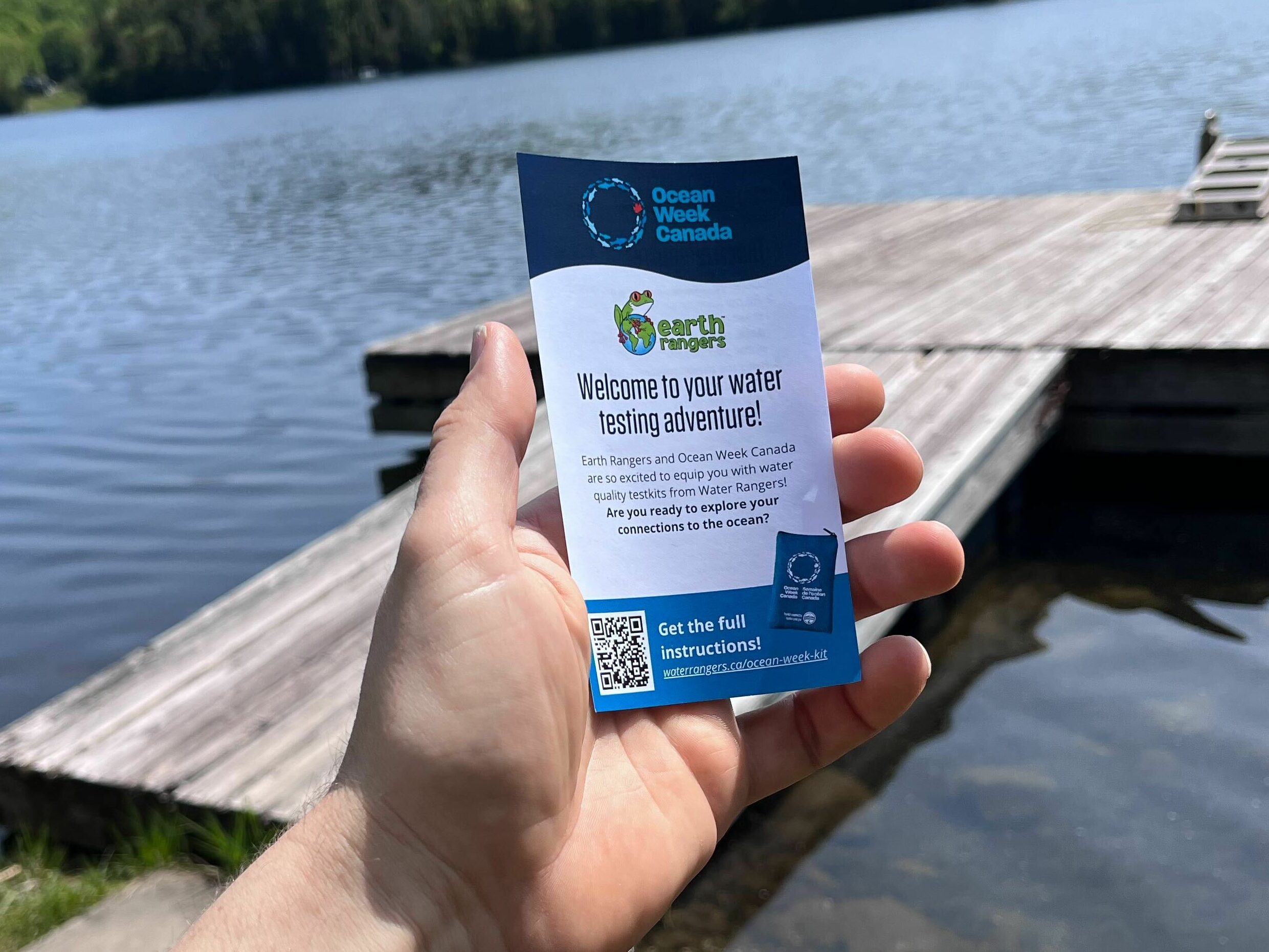
Welcome to Water Rangers and Ocean Week Canada!
Attention Earth Rangers! Our lakes, rivers, and ocean need you! Threats like pollution and climate change are putting our waterbodies and all the wildlife that call them home at risk. But just how much trouble are our waters in? In celebration of Ocean Week, Earth Rangers and Water Rangers have teamed up to find out… but we need your help!
Your mission…
Between June 3 and June 11, take your friends or family to visit your local waterway, test the water, take action photos, and record your results on your field sheet. You are then an official Water Ranger!
There’s enough test strips to do 10 water tests. Earth Rangers will also send you a form to collect your data. If you want to keep testing, you can join the Earth Rangers data collection group on Water Rangers (but first, you’ll need to make a free account).
Can you think of other ways you can give back to our waterways? Here are some ideas!
- Pick up garbage
- Make artwork to share the beauty of waterways
- Design a scavenger hunt that encourages other people to appreciate waterways, too
What is Ocean Week Canada?
Ocean Week, running from June 3 – 11, 2023, is an annual celebration of the ocean held during the week of World Ocean Day (June 8). Through events and learning activities, we’re coming together to recognize the important role the ocean plays in our everyday lives and how local water bodies connect us all with the ocean.
- More ocean-themed activities for students (and teachers) from Kindergarden to Grade 12
- More ocean-themed activities for community groups
Participate in an ocean-themed parkrun!
If you’re in one of these cities, join us by dressing up as your favourite sea creature and walking, jogging, or running 5km! It’s free and simple to join. Learn more below:
- June 3rd: Victoria Truro parkrun (Truro, Nova Scotia)
- June 3rd: Saint-Paulin parkrun (Saint-Paulin, near Trois-Rivieres, Quebec)
- June 10th: Frédéric Back parkrun (Montréal, Quebec)
- June 3rd: Moussette parkrun (Gatineau, Quebec)
- June 3rd: Kanata parkrun (Ottawa, Ontario)
- June 3rd: Victoria Park Kitchener parkrun (Kitchener, Ontario)
- June 3rd: Mundy parkrun (Coquitlam, BC)
- June 10th: Ambleside parkrun (Vancouver, BC)
There’s tons more events happening across Canada. You can learn more about Ocean Week Canada on their website!
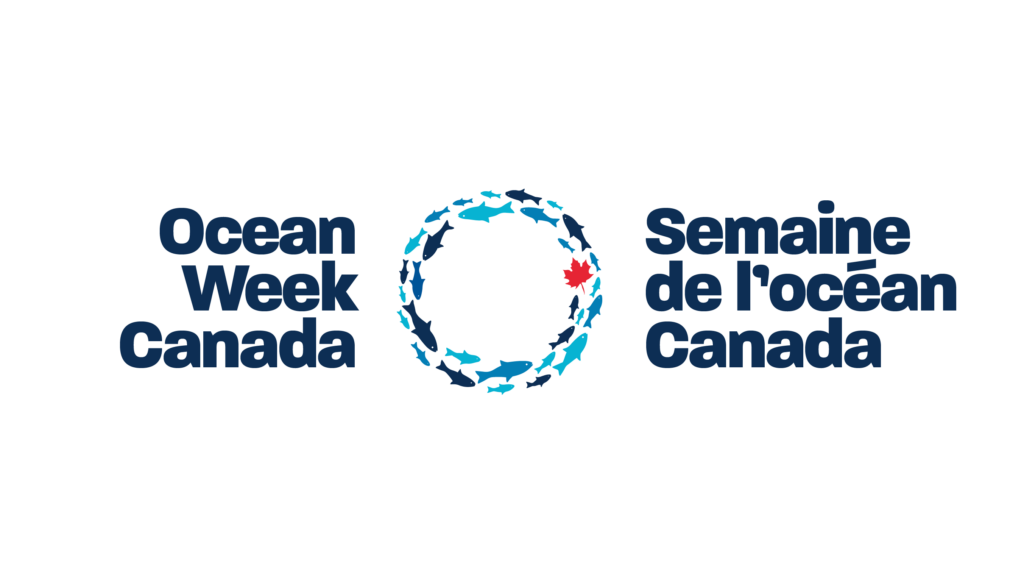
Why Ocean testing?
Ocean testing is important because the ocean is constantly changing. Being able to gather water quality data from the ocean gives us a snapshot of how the ocean is doing. Now more than ever, the ocean needs our help! Even small changes to water quality in the ocean can have incredible impacts on sea life. The more we can learn about the ocean the better equipped we can be to preserve it for future generations.
But I’m not near the ocean!
Did you know that ALL waterways are connected to the ocean?
Understanding the connection between waterways and the ocean is so important because any pollution from inland can eventually reach and affect the ocean.
This is why it’s also important to test all waterways leading to the ocean! Without regularly testing our local waterways, we have no idea how healthy (or unhealthy) they are. Understanding water health is the first step in making good decisions for it!
Using your Testkit
Safety
Your safety is more important than anything! By participating you acknowledge that you understand that there are risks associated with water testing activities and accept responsibility for your personal safety. Have fun, but be safe while conducting your tests:
- When possible, wear a lifejacket, especially near swift/deep water.
- Sample with a friend.
- Check for hazards, and avoid any dangerous areas (e.g. faster moving water, bad weather conditions, dangerous wildlife, construction).
- When in doubt, do not sample. Do not trespass onto private property.
- Before leaving on your sampling adventure, let someone know.
- Never drink untreated water.
- Bring a friend! Testing is done best by 2 or more people.
Choose sample sites
Where: On the water! Choose a spot you’d like to test and that you think you can return to later. Sample locations could be based on interesting findings, set protocols by an organization, or because you can visit that place regularly. Use this opportunity to try and improve an area over time.
Record details, pick up trash and plan to improve shorelines. Describe shoreline conditions and waterway conditions: Is it a sandy beach, or rocky? Record in “Location details” how you get access to this spot. Any details you add will help you and others to visit, revisit and retest.
Creating a schedule
Meaningful results are obtained over time, so make sure to create a plan you can keep! Regular testing intervals help us better understand water health.
You can test as often as you’d like, but our official testing days are the last Sunday of every month (back-up days are Saturday and Friday). You should try to test at the same spot every month, preferably at the same time of day. This will help you see trends and learn more!
Testing tips!
Safety first! At no point should you put yourself in harm’s way.
Look around: What do you see, smell, hear? Record details about wildlife, what you see.
Weather: Record wind and other weather conditions. Note any rain or storms in the past 24-48 hours.
Take photos: If there’s something specific, take pictures to give scale and context. Photos help you find locations again.
Record using the app: Use our app, and if you get stuck send us an email at [email protected].
Air temperature
Air temperature helps us understand context for our observations.
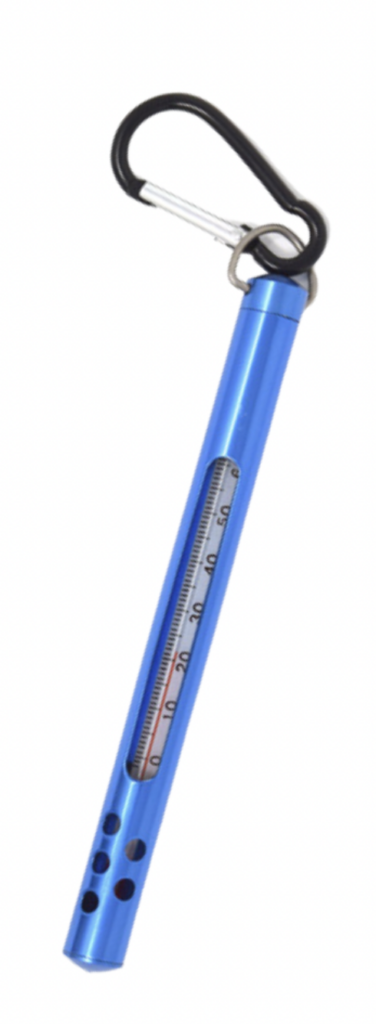
How to:
- Take thermometer out.
- Hang it in a tree or another shady spot near where you’re conducting your test. Thermometer should be at least 1.5m off the ground. If you’re on a boat, put it in a shady spot away from metal and your body.
- Leave there for at least 5 minutes. Take your reading.
- Measure in °C.
TIP: Try and take this measurement as close to the same time you take the other measurements. Do not hang the thermometer in the sun or around your neck while testing as your body makes it warmer.
Water temperature
Water temperature can affect pH, conductivity, and dissolved oxygen. It impacts water’s density and water’s abilities to support life, absorb gases (like carbon dioxide) and other nutrients. Increases in water temperature can cause some chemicals to become more “soluble”. Algae blooms and other vegetation can also grow more quickly in warmer water.

How to:
We’re testing the water temperature at least 10cm below the surface. All you have to do is put your thermometer in the water, and hold it below the surface for 5 minutes!
Wait until the temperature remains steady for 30 seconds before taking your reading. Measure in °C.
Teststrips
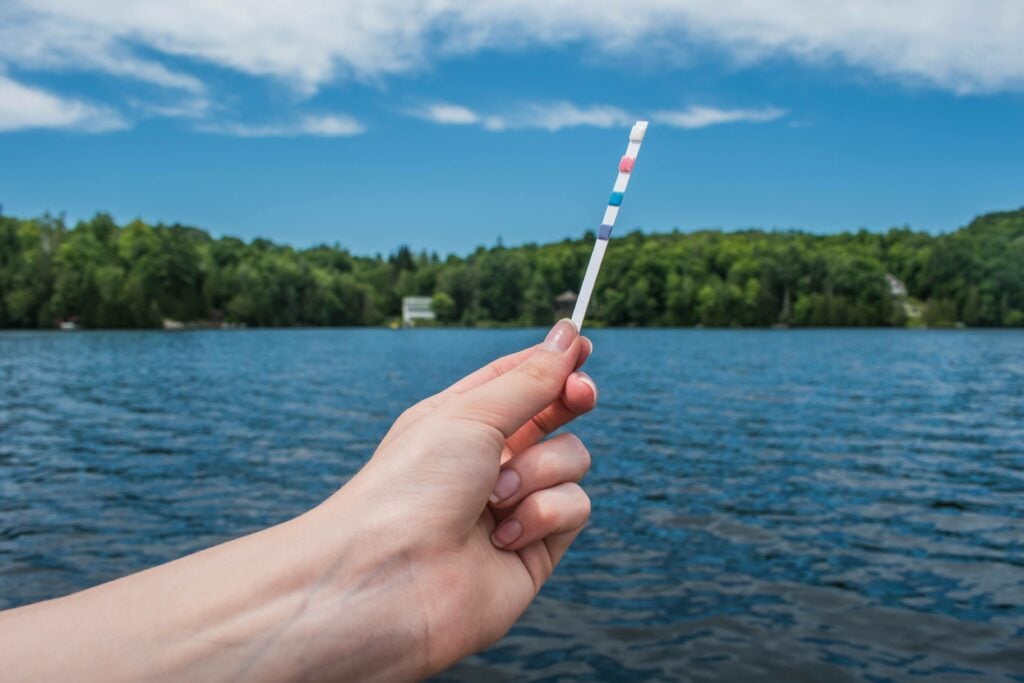
We chose these teststrips because they are the most accurate and compare well to more expensive probes without requiring calibration.
MORE: waterrangers.ca/strips
How to:
IMPORTANT! Make sure your hands are dry. Moisture will ruin strips.
- Shake out 1 teststrip and close the container.
- Dip the entire strip in the water. Remove after 2 seconds.
- Wait 20 seconds.
- Compare colours with guide on backside of the container.
Colour in between? Record exactly half (e.g. between 0.5 and 1 = 0.75)
Chlorine
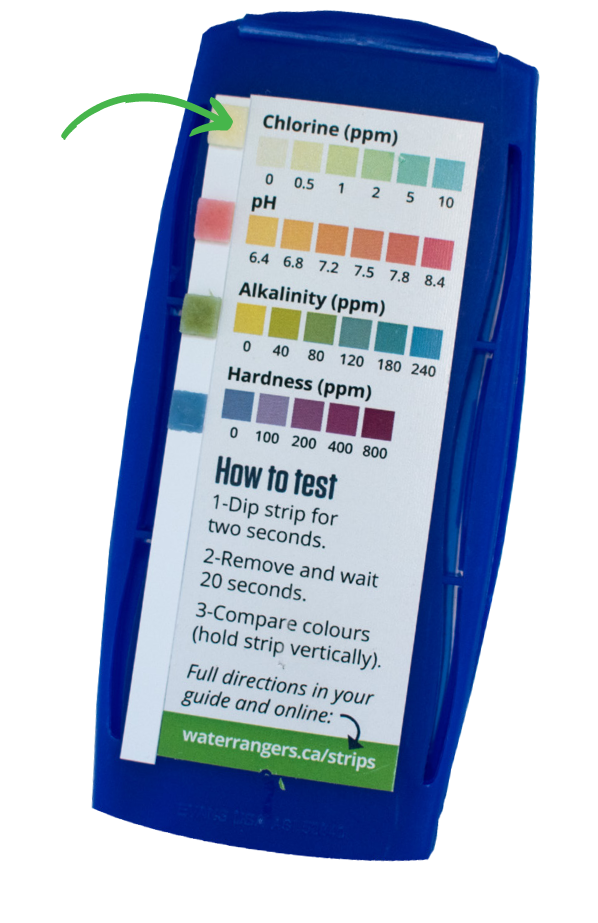
What is it? Chlorine is most widely known for being used within compounds to purify water / create cleaning products.
What does it mean? Small amounts help us make water drinkable! It isn’t naturally found in ecosystems.
Why am I testing for chlorine? While most people will get zero, near water treatment plants or close to pools and other industrial areas, chlorine readings have been higher.
How to interpret:
0 -0.5 ppm : Great
1 ppm : Worrying
2+ ppm : Is this a pool?
pH
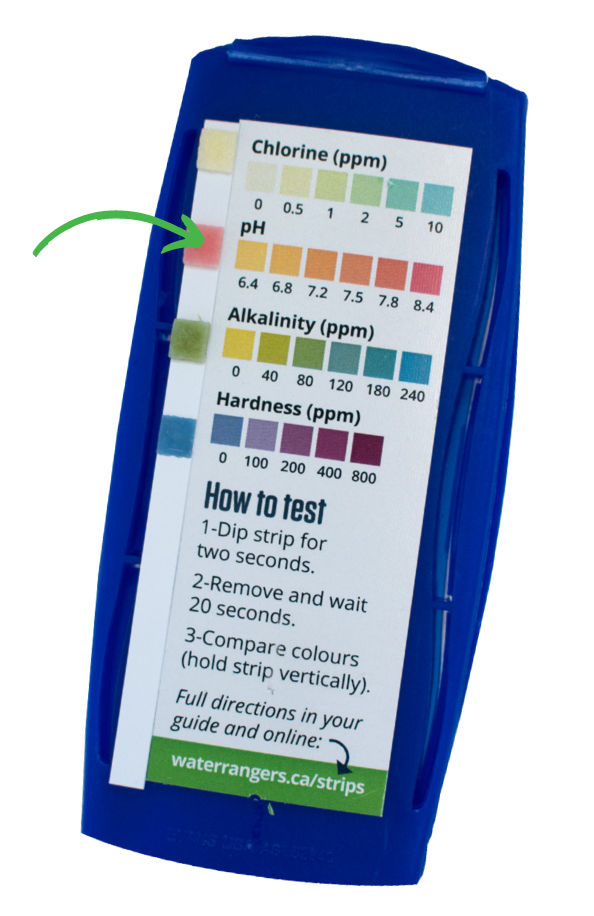
Rivers / lakes range from 5 (acidic) to 9 (basic), depending on the bedrock composition and other factors. You’ll need to create a baseline for what’s a normal pH level (e.g. Ottawa River’s pH is around 7, while the Rideau River is around 8).
pH is important because it sets up conditions for how easy it is for nutrients to be available (which can lead to algae blooms) and how easily things like heavy metals can dissolve in the water (creating toxicity).
Pollution can change pH levels. Acid rain, mining run-off, etc. lower pH.
Low pH can reduce how many fish eggs hatch, and make life difficult for fish and macroinvertebrates (the small creatures that are the backbone of our water ecosystems).
pH is the thickest pad on the strip, and ranges from orange to pink so it stands out! Colour tone is the most important factor when comparing. Move your strip so that it overlaps with each colour for best results.
Algae blooms
Harmful algae is a growing concern for lakes and are made worse by excess nutrients from human activity. Algae blooms have an optimum pH between 8.2 – 8.7 and usually appear in late Summer/early Fall. When algae grows, pH levels go up, and can reach over 10 (all fish die above 10)! Some algae is normal. However, if you you see a lot, be careful as some are toxic!
Fast facts
- Lakes and rivers have an optimum pH level (average 7.4).
- Fish and organisms can’t survive above or below certain values.
- pH changes could indicate issues.
- Plants affect pH over a day through photosynthesis and respiration: pH will be highest in the afternoon and lowest before sunrise.
Alkalinity
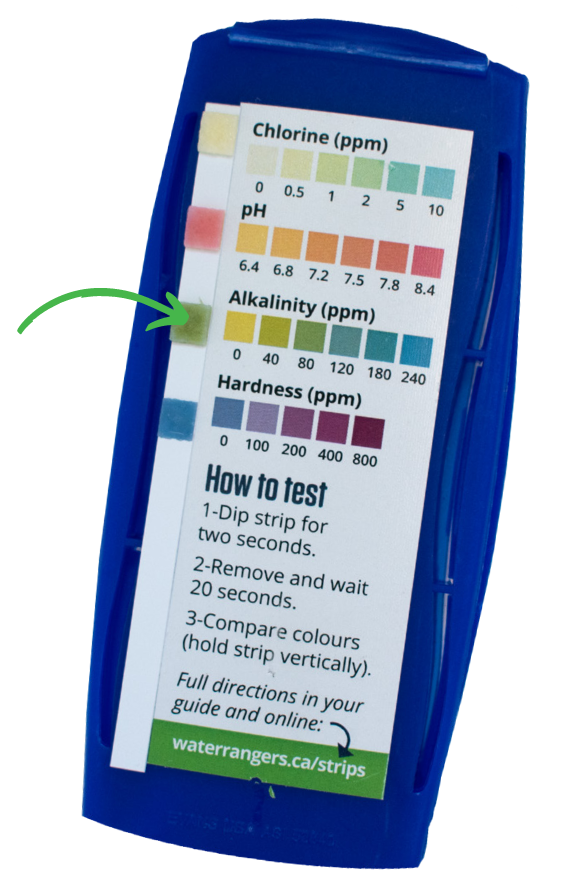
It’s water’s capacity to neutralize acid or resist decreases in pH. Natural water’s alkalinity is affected by soil, bedrock, plants & industrial waste. For example, limestone tends to make water have higher alkalinity. High alkalinity is NOT normally a sign of bad water quality.
Did you know? Over time, water’s alkalinity and hardness won’t change much unless there is a pollution source. They are important for giving context for other results, such as pH.
How to interpret
10 ppm : Very low
11-50 ppm : Low
51-150 ppm : Moderate
151-300 ppm : High
> 300 ppm : Very high
Hardness
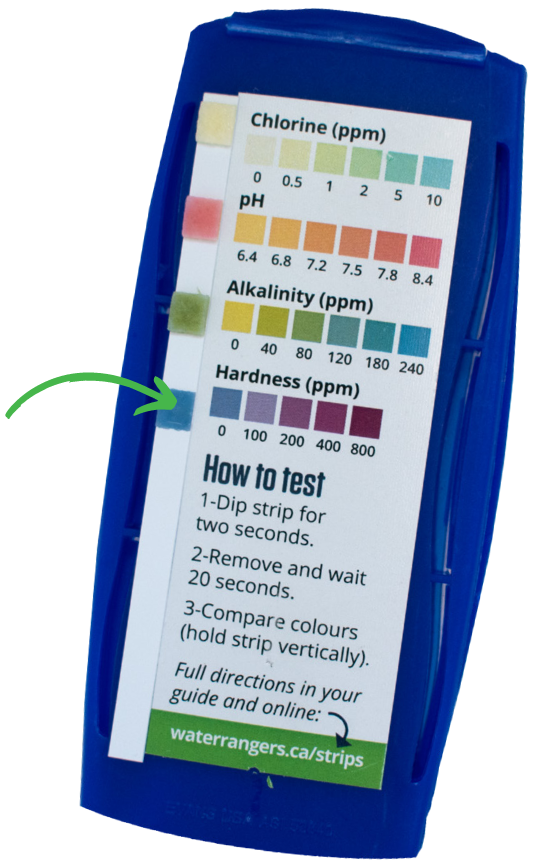
Hardness is related to alkalinity (they often change together) as both measure calcium carbonate content. It also measures other ions in the water that do not necessarily neutralize acid. Hard water is high in dissolved minerals, including calcium and magnesium.
How to interpret
0-20 ppm: Soft
21-60 ppm: Moderately soft
61-120 ppm: Moderately hard
121-180 ppm: Hard
>180 ppm: Very hard
Adding context
- Be observant! You’re giving context for your readings. Do you see algae? Plants in the water? Any smells?
- Note any weather events that happened in the last 24-48 hours, especially if it has rained.
- Note wind / weather conditions.
- If you have your own test equipment that records other items, please record them.
- Take a photo to show any issues and help you revisit the same spot for further testing.
Waste
Our goal is to become waste-free. In some areas, you can recycle your used testrips. You can mail your used teststrips to us. MORE: waterrangers.ca/waste
Support Water Rangers by getting your own shirt
All proceeds help support us in our mission to provide accessible water monitoring for all!
Water Rangers
Water Rangers empowers citizens to learn and take action on water conservation through our user friendly web platform, water stewardship training, and water quality testkits.
We use hands-on user testing with scientists / water volunteers to learn the best ways to share information. Water Rangers’ website and app for mobile devices allow users to collect water quality data and report local water issues such as pollution, and algae blooms.
Sign up for free, and get started sharing your data with your community! MORE: app.waterrangers.ca
iOS app
Our apps for iOS is for data collection ONLY. To view data, manage groups and edit your profile, visit app.waterrangers.ca. If you have collected data using our apps while offline, sync your data
once online again.
Why testkits?
We’ve developed these easy-to-understand testkits so that everyone can get involved.
Want to upgrade your testing? You can also test for conductivity, water clarity, dissolved oxygen, salinity and more. We’re constantly testing new equipment, so more could be coming soon!
MORE: waterrangers.ca/testkits
